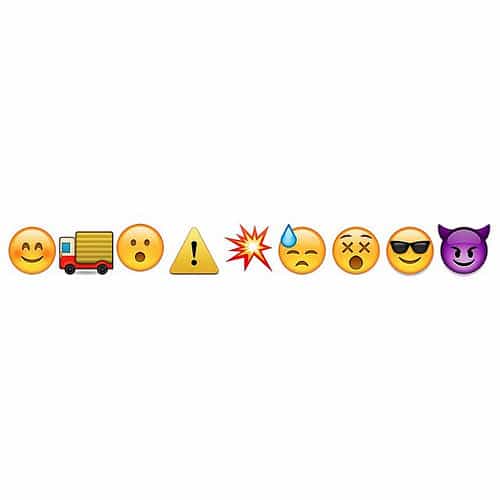The New Languages of the Internet
Whilst the internet has given us many new ways to communicate ranging from video chatting to social media networks, recently there has been a trend for our basic language to be overhauled through the new digital medias. From the widespread…

Whilst the internet has given us many new ways to communicate ranging from video chatting to social media networks, recently there has been a trend for our basic language to be overhauled through the new digital medias. From the widespread use of emoji characters, to the sudden take-up of acronyms, hashtags, and internet slang, it seems that the 21st century individual is increasing under pressure to learn and use these new communication devices.
Get the Best Updates on SaaS, Tech, and AI
Emojis

The use of emojis originated in Japan in the late 1990s, and drew on inspiration from manga animation to provide a series of pictographs that could be simply used to communicate a range of emotions and items via the smiley-themed graphics. Emojis really rose to prominence when they were included in recent editions of Apple and Android technology, and have granted users a fun and easy way to communicate an array of ideas and expressions. However, the use of emojis hasn’t been restricted to personal communication, as many businesses such as Aloft Hotel have been quick to use emojis to cross language barriers and speed up text-based communication.
Even online casino sites such as Euro Palace have introduced their own emoji guide that hints at the potential of using such characters as a form of online payment system. And whilst such a theory might be surprising, the fact that Euro Palace offers a wide range of casino games across a variety of countries, it means that such a method could help gamers quickly and easily understand the new gaming technologies on offer.
Hashtags

Since Twitter came to prominence in the past decade, much has been made of the omnipresent hashtag feature. By allowing users to generate their own hashtags to help make a particular trends ‘go viral’, it has provided another example of the democratising power of the internet. Again, businesses have been quick to leap aboard this bandwagon with the likes of Vitamin Water using the #uncapped hashtag to promote their branded series of concerts. By using such language innovations, it helps provide the company with a way to access the youth market in a way that bypasses the often traditional and stuffy language of marketing.
Internet slang

And finally, one of the biggest developments in internet-based language has been the rise of internet slang. From highly-recognisable acronyms such as LOL and OMG that pepper much teen-speak, to less obvious acronyms such as BYOD, they all provide another example of the way in which new language powers have helped deliver a more efficient communication experience. And just in case you should be feeling a little out of touch with the ever-changing language of youth culture, then be sure to check out Urban Dictionary which provides an constantly-updated database of street slang.
Images from Flickr (Creative Commons)
FTC Disclosure: The pages you visit may have external affiliate links that may result in me getting a commission if you decide to buy the mentioned product. It gives a little encouragement to a smaller content creator like myself.
